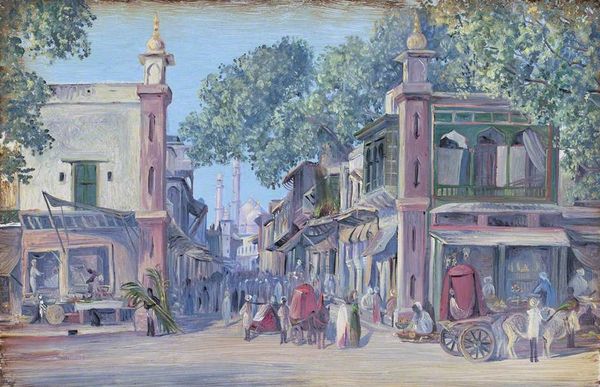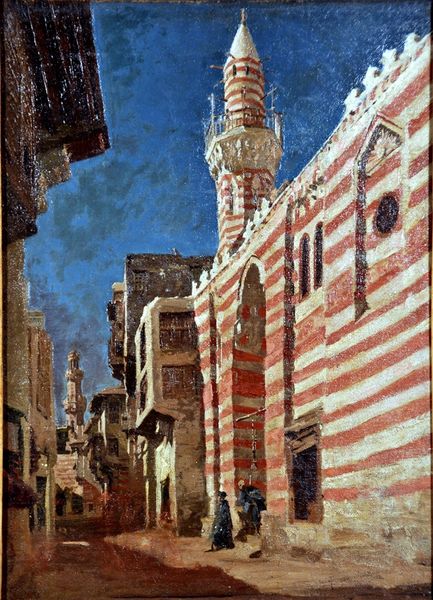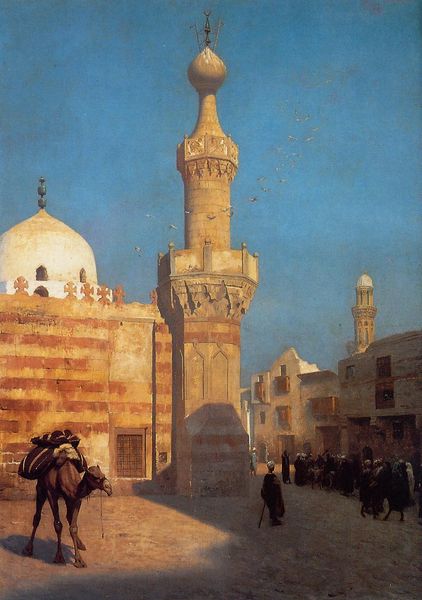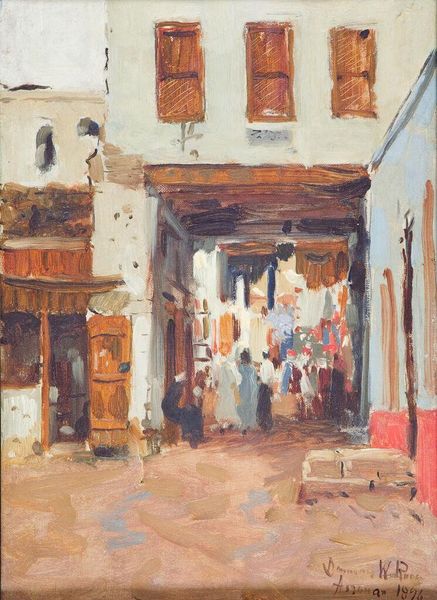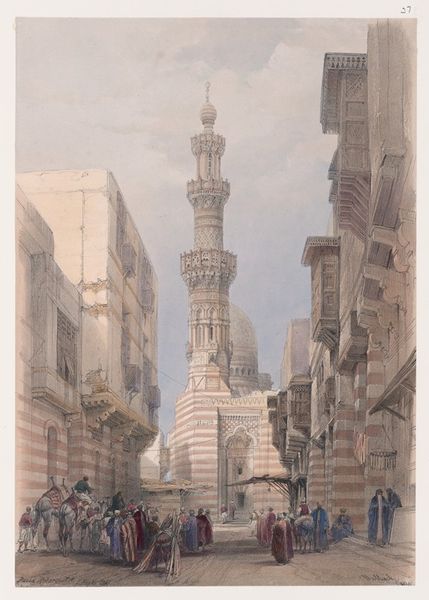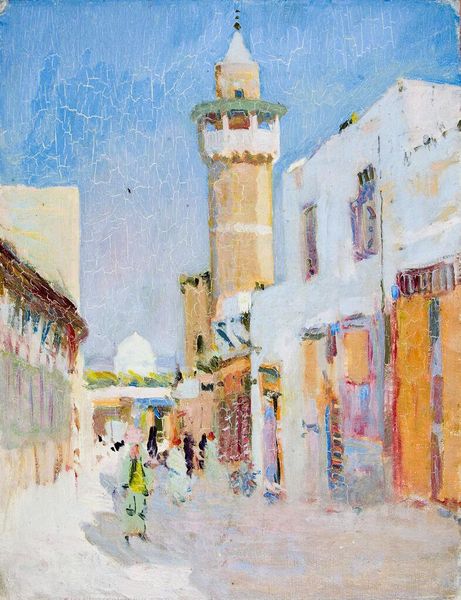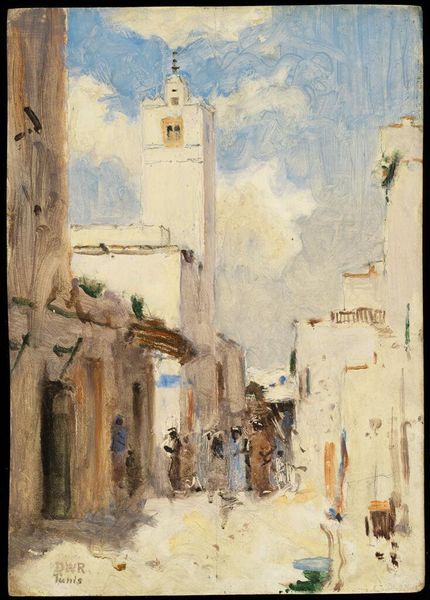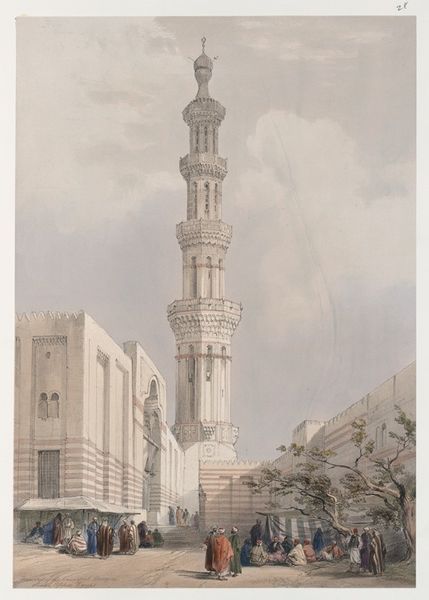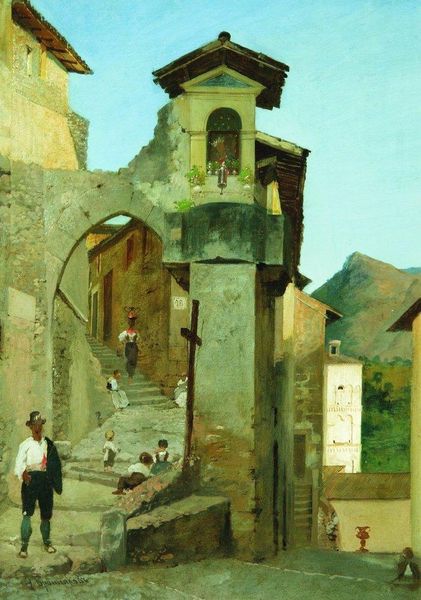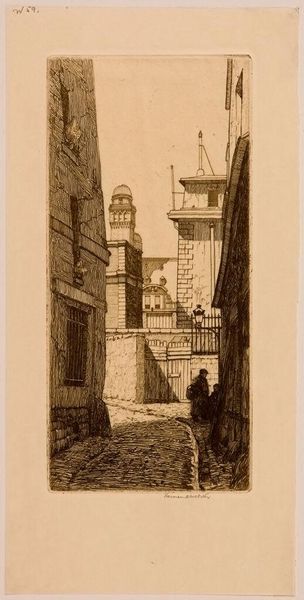
painting, plein-air, watercolor
#
urban landscape
#
painting
#
street view
#
plein-air
#
watercolor
#
urban art
#
orientalism
#
square
#
painting painterly
#
cityscape
#
islamic-art
#
watercolour bleed
#
watercolour illustration
#
genre-painting
#
street
#
watercolor
#
building
Copyright: Public domain
Curator: Let's turn our attention to Konstantin Egorovich Makovsky's "Cairo," a watercolor created in 1867. Editor: What strikes me immediately is the quality of light; it's diffused and dreamlike, softening the geometry of the buildings. Curator: Absolutely. The Orientalist style frequently deployed such aestheticizations to evoke a sense of exoticism and otherness, playing into the European gaze on the Middle East during that era of colonial expansion and cultural fascination. Editor: You can see the emphasis in his brushstrokes; there is such control and fluidity. He balances representation with suggestion, hinting at details rather than defining them precisely. It is like a memory. Curator: Right. Makovsky, steeped in academic painting traditions, engaged with the broader socio-political narratives surrounding the East, interpreting and conveying them to a European audience predisposed with specific expectations and prejudices about the region and its people. Editor: What do you make of the composition? How the vertical thrust of the minaret, adorned with red and white bands, establishes the tonal key and dominates the frame. Curator: That central monument can be considered as more than just structure; it's a visual metaphor for power, belief, and cultural identity, reinforcing Orientalist ideals. The gathering of individuals in the lower portion of the piece—part of the composition but still rendered without individual particularity—further exemplifies a common habit of portraying people within the culture as mere spectacle. Editor: This perspective provides depth to the space while, at the same time, emphasizing certain architectural characteristics. There is some beauty here, a certain kind of architectural language spoken. Curator: And yet, even appreciating his artistic skills, we have to acknowledge his complicity in the portrayal and promotion of specific stereotypical ideologies that perpetuated an unequal relationship between Europe and the Middle East. Editor: Indeed, it is like looking at a mirage that, although breathtaking, also needs to be approached with criticality to dissect all layers of history embedded within its creation.
Comments
No comments
Be the first to comment and join the conversation on the ultimate creative platform.
